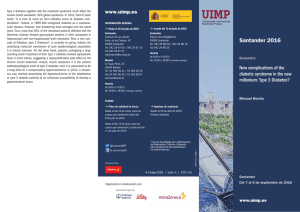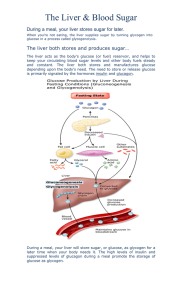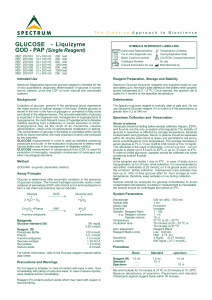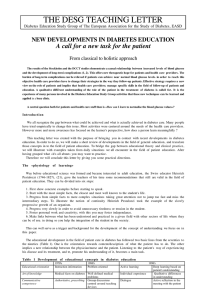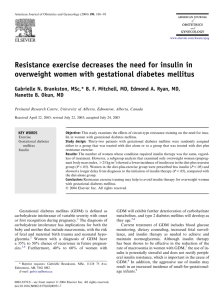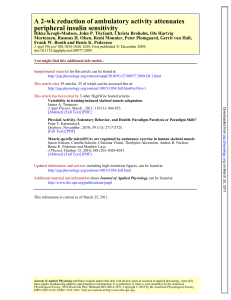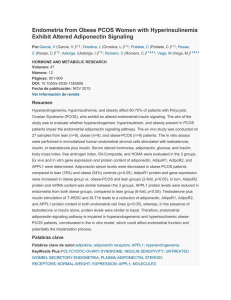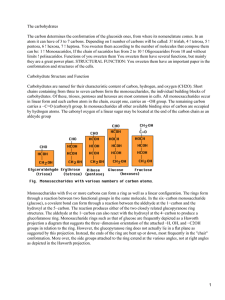Matsuda reducido
Anuncio
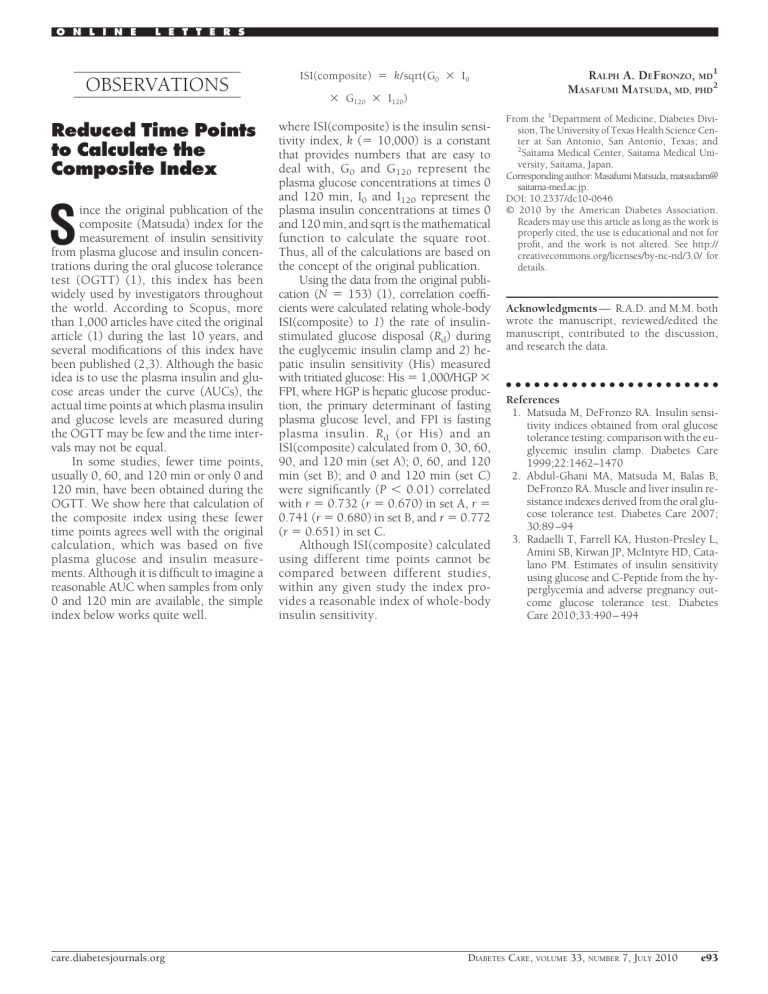
O N L I N E L E T T E R S OBSERVATIONS Reduced Time Points to Calculate the Composite Index S ince the original publication of the composite (Matsuda) index for the measurement of insulin sensitivity from plasma glucose and insulin concentrations during the oral glucose tolerance test (OGTT) (1), this index has been widely used by investigators throughout the world. According to Scopus, more than 1,000 articles have cited the original article (1) during the last 10 years, and several modifications of this index have been published (2,3). Although the basic idea is to use the plasma insulin and glucose areas under the curve (AUCs), the actual time points at which plasma insulin and glucose levels are measured during the OGTT may be few and the time intervals may not be equal. In some studies, fewer time points, usually 0, 60, and 120 min or only 0 and 120 min, have been obtained during the OGTT. We show here that calculation of the composite index using these fewer time points agrees well with the original calculation, which was based on five plasma glucose and insulin measurements. Although it is difficult to imagine a reasonable AUC when samples from only 0 and 120 min are available, the simple index below works quite well. care.diabetesjournals.org ISI(composite) ⫽ k/sqrt共G0 ⫻ I0 ⫻ G120 ⫻ I120) where ISI(composite) is the insulin sensitivity index, k (⫽ 10,000) is a constant that provides numbers that are easy to deal with, G0 and G120 represent the plasma glucose concentrations at times 0 and 120 min, I0 and I120 represent the plasma insulin concentrations at times 0 and 120 min, and sqrt is the mathematical function to calculate the square root. Thus, all of the calculations are based on the concept of the original publication. Using the data from the original publication (N ⫽ 153) (1), correlation coefficients were calculated relating whole-body ISI(composite) to 1) the rate of insulinstimulated glucose disposal (Rd) during the euglycemic insulin clamp and 2) hepatic insulin sensitivity (His) measured with tritiated glucose: His ⫽ 1,000/HGP ⫻ FPI, where HGP is hepatic glucose production, the primary determinant of fasting plasma glucose level, and FPI is fasting plasma insulin. R d (or His) and an ISI(composite) calculated from 0, 30, 60, 90, and 120 min (set A); 0, 60, and 120 min (set B); and 0 and 120 min (set C) were significantly (P ⬍ 0.01) correlated with r ⫽ 0.732 (r ⫽ 0.670) in set A, r ⫽ 0.741 (r ⫽ 0.680) in set B, and r ⫽ 0.772 (r ⫽ 0.651) in set C. Although ISI(composite) calculated using different time points cannot be compared between different studies, within any given study the index provides a reasonable index of whole-body insulin sensitivity. RALPH A. DEFRONZO, MD1 MASAFUMI MATSUDA, MD, PHD2 From the 1Department of Medicine, Diabetes Division, The University of Texas Health Science Center at San Antonio, San Antonio, Texas; and 2 Saitama Medical Center, Saitama Medical University, Saitama, Japan. Corresponding author: Masafumi Matsuda, matsudam@ saitama-med.ac.jp. DOI: 10.2337/dc10-0646 © 2010 by the American Diabetes Association. Readers may use this article as long as the work is properly cited, the use is educational and not for profit, and the work is not altered. See http:// creativecommons.org/licenses/by-nc-nd/3.0/ for details. Acknowledgments — R.A.D. and M.M. both wrote the manuscript, reviewed/edited the manuscript, contributed to the discussion, and research the data. ● ● ● ● ● ● ● ● ● ● ● ● ● ● ● ● ● ● ● ● ● ● ● References 1. Matsuda M, DeFronzo RA. Insulin sensitivity indices obtained from oral glucose tolerance testing: comparison with the euglycemic insulin clamp. Diabetes Care 1999;22:1462–1470 2. Abdul-Ghani MA, Matsuda M, Balas B, DeFronzo RA. Muscle and liver insulin resistance indexes derived from the oral glucose tolerance test. Diabetes Care 2007; 30:89 –94 3. Radaelli T, Farrell KA, Huston-Presley L, Amini SB, Kirwan JP, McIntyre HD, Catalano PM. Estimates of insulin sensitivity using glucose and C-Peptide from the hyperglycemia and adverse pregnancy outcome glucose tolerance test. Diabetes Care 2010;33:490 – 494 DIABETES CARE, VOLUME 33, NUMBER 7, JULY 2010 e93

